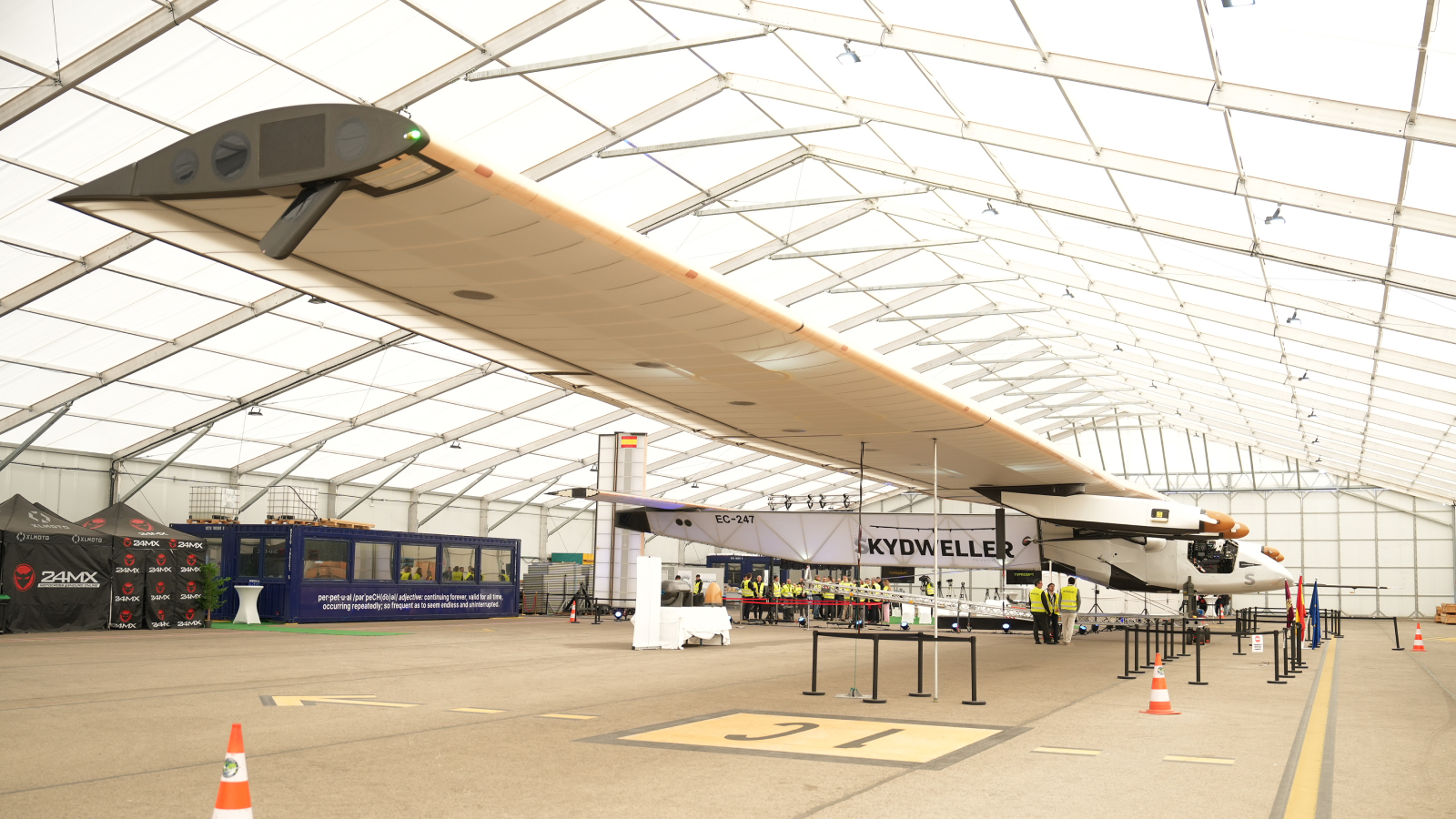U.S. tech startup Skydweller Aero has teamed up with Thales, a French electronics company specializing in defense systems, to develop a new maritime surveillance drone that can stay aloft far longer than existing machines.
Skydweller powers itself purely from solar energy and aims to be capable of continuous flight. The initial flight milestone will be for it to remain aloft for 90 days, but ultimately it has the potential to fly for much longer.
The solar energy that powers the Skydweller is captured by over 17,000 individual solar cells, spread across approximately 2,900 square feet (270 square meters) of wing surface — across a wingspan of 236 feet (72 m), 25 feet (7.6 m) longer than a Boeing 747. In ideal conditions, the solar cells can generate up to 100 kilowatts of power for the aircraft.
During daylight hours, solar energy is used to maintain flight, power the onboard avionics and charge batteries. The Skydweller has over 1,400 pounds (635 kilograms) of batteries, which are used to power the aircraft through the night. This will allow Skydweller to maintain almost continuous flight.
The Skydweller typically flies at an altitude between 24,600 and 34,400 feet (7,500 and 10,500 meters), but can fly as high as 44,600 feet (13,600m) during the day, before dropping by 4,900 to 9,800 feet (1,500 to 3,000m)at night, as this minimizes power consumption.
Despite its similar wingspan to a long-range commercial airliner, Skydweller weighs 160 times less than a “jumbo jet” — 2.5 metric tons at maximum capacity versus 400 tons for the 747 at full payload.
Related: China has developed the largest drone carrier in the world — and it’s getting ready for takeoff
Solar-powered aircraft are not completely new, but some designs have suffered structural problems, including catastrophic failure mid-flight when climbing or descending through medium altitudes (approximately 6,500-32,800 feet, or 2,000-10,000 m).
The Skydweller has been specifically designed to operate in this altitude range, using automatic gust-load alleviation software in the flight control system to reduce the aerodynamic loads caused by turbulence. It has also been constructed from carbon fiber and can carry up to 800 pounds (362 kg) of payload.
Continuous surveillance by sky
Operating an aircraft continuously and reliably for up to 90 days necessitates a quadruple-redundant flight control system and vehicle management system (VMS). Should one of the onboard systems fail, a backup system can take over to maintain the flight.
Self-healing algorithms within the VMS allow any failed strings (coding in an algorithm) to be autonomously shut down, corrected and resurrected during flight, thereby allowing the aircraft to return to quadruple redundancy, according to information published by company representatives. This enables the aircraft to consistently maintain flight.
Although the onboard batteries, once sufficiently charged, can maintain flight during the night, their capacity will degrade over time, which could limit the maximum patrol duration of the aircraft. Skydweller’s reliance on solar power to maintain flight means that its patrols must also avoid areas of limited sunlight, such as polar regions during winter.
Skydweller Aero has recently partnered with Thales to equip Skydweller with a radar surveillance system designed for maritime patrol operations. Further test flights are planned, with the goal of extending the maximum flight duration. Even so, this is a massive step forward in solar-powered flight, especially for long-term surveillance monitoring.
